under compulsion, 2006 – 2007
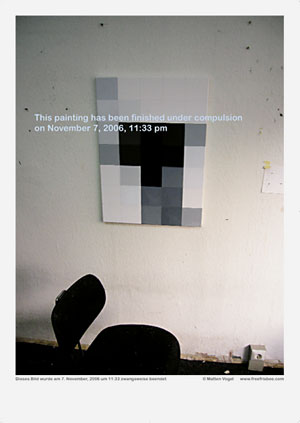
under compulsion, 07.11.2006
Poster, 500 copies
Künstlerische Freiheit unter dem Damoklesschwert
Eine Wand mit Löchern, die wie Einschußlöcher aussehen. Der Teppichboden sieht abgewetzt aus und von der dreckig-weißen Wand mit der altmodischen Steckdose blättert der Putz. Ein alter, einfacher Drehstuhl, der auch meistens irgendwie im Bild ist, wenn auch nicht das Hauptmotiv bildet. Dieses ist dahinter an der Wand zu finden: ein Gemälde aus grauen Quadraten und weißen Flächen. Manchmal hängen daneben auch noch ein Zettel oder zwei, so als wären sie dort achtlos vergessen worden. Es entsteht der Eindruck eines spontanen Schnappschusses, über dem schließlich ein Satz steht wie z. B. „Dieses Bild wurde am 7. November, 2006 um 11:33 zwangsweise beendet.“ Durch die sachlich schlichten Sätze wissen wir, dass hier ein Zwang ausgeübt wurde.
In der Serie „under compulsion/unter Zwang“ scheint etwas sterben zu müssen – die künstlerische Freiheit. Dies ist es, was Vogel hier aufgibt.
Kein Wunder, daß seine Fotografien dieser Situation, mit Datum und Uhrzeit genau festgehalten, an die dokumentarischen Fotos eines grausigen Tatorts erinnern.
Bei Vogels Arbeiten ist oftmals nicht das Endprodukt entscheidend, sondern seine künstlerische Haltung. In diesem Fall ist vor allem das Beenden der Werke spannungsgeladen: Durch eine SMS bekommt Vogel irgendwann die Nachricht, daß er die Arbeit an dem Gemälde sofort einstellen muß. Genaueres über die Funktionsweise dieses Systems verrät der Künstler nicht. Der Zustand des gerade begonnenen Bildes ist diesem willkürlich agierenden System jedoch nicht bewußt, und so kann es passieren, daß Vogel gerade erst ein einziges Quadrat ausgemalt hat, wenn die Nachricht eintrifft, daß er den Pinsel nun schon wieder aus der Hand legen muß. Trifft die SMS ein, hält Vogel den Zustand des Gemäldes fotografisch fest und malt dann das zuletzt begonnene Quadrat noch zu Ende. Die leer gebliebene Fläche wird mit Bleistift schraffiert, um die Grauwerte anzudeuten, die Vogel ausgemalt hätte, wenn er hätte weiter arbeiten dürfen.
Christiane von Gilsa Auszug aus Katalogtext
Artistic freedom under the sword of Damocles
A wall with holes that look like they were created by flying bullets. The carpet looks worn out and the plaster is peeling off the dirty-white wall with the old-fashioned plug socket. A simple old swivel chair is usually also in the picture somewhere, even if it doesn’t take center stage. Instead, the focus lies on an object hung on the wall: A painting showing gray squares and white surfaces. Sometimes a piece of paper or two are tacked up next to the painting; they look as though someone has carelessly left them there. All of this creates an impression of these images being spontaneous snapshots. Sentences have been superimposed over the images, for example, “Dieses Bild wurde am 7. November, 2006 um 11:33 zwangsweise beendet” (which translates as: This painting was compulsorily finished on November 7, 2006 at 11:33). The factual, straightforward sentences let us know that coercion has taken place.
In the series “under compulsion/unter Zwang” it seems as though something has had to die – and that something is artistic freedom. The artistic freedom Vogel is relinquishing.
No wonder, then, that the photographs of this situation, with the precise dates and times added, are somewhat reminiscent of documentary photographs of a horrendous crime scene. In Vogel’s work it is often not the end product that is crucial, but his artistic position. In this case it is the completion of the works that is full of tension: Vogel is notified via text message at some point in time that he has to immediately stop working on the painting in question. The artist says no more of the precise way this system works. Yet the arbitrary system is not aware of what state the painting is in when the message is sent – sometimes Vogel has just begun work and has to put the brush down after filling in no more than a single gray square. Upon receiving the text message, Vogel documents the state of the painting and then finishes filling in the last square he has begun painting. The remaining blank space on the canvas is then penciled in with cross-hatching in order to hint at the gray tones Vogel would have painted, had he been allowed to carry on.
Christiane von Gilsa
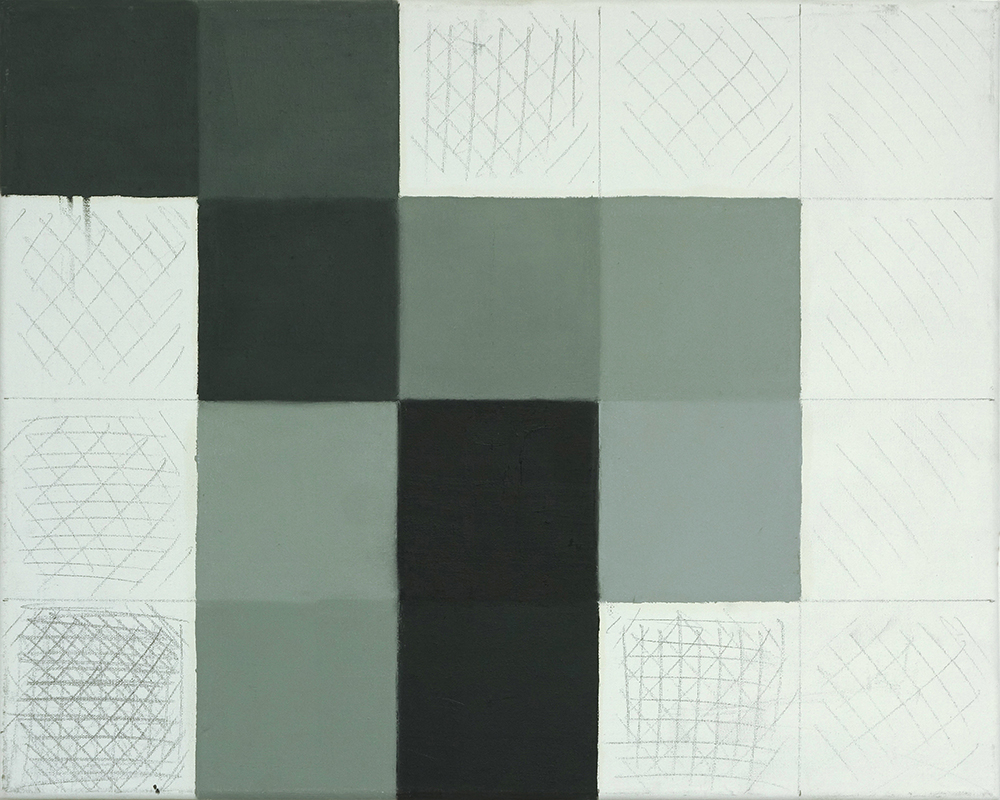
under compulsion # 5, 2006 zwangsweise beendet am 02.11.2006 um 14:33 Öl und Bleistift auf Leinwand 40 x 50 cm
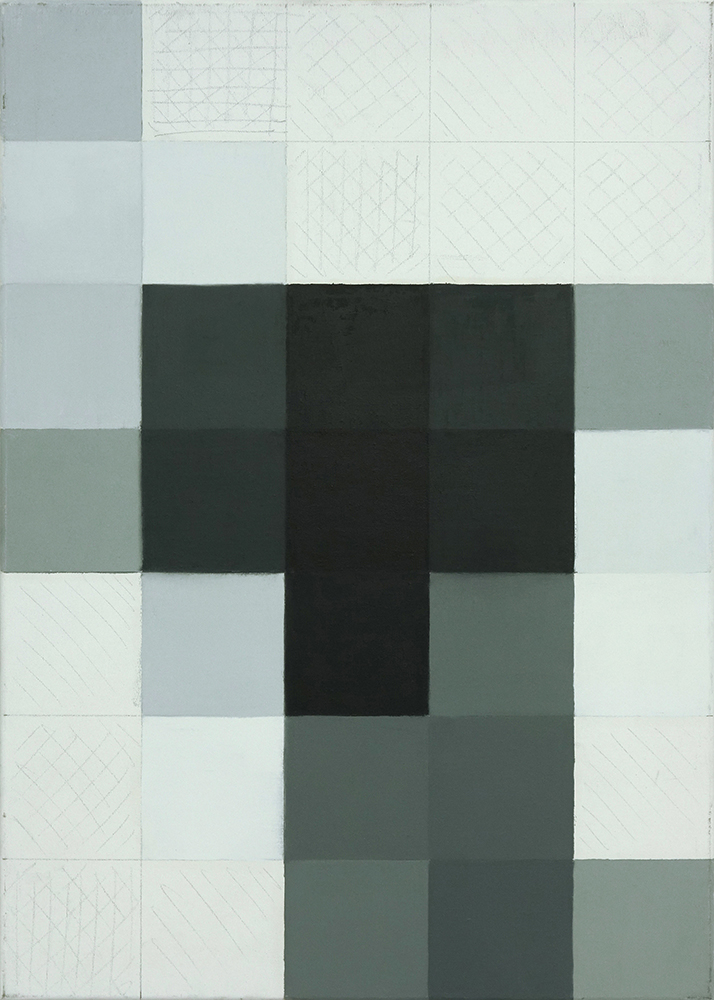
under compulsion # 6, 2006 zwangsweise beendet am 07.11.2006 um 11:33 Öl und Bleistift auf Leinwand 70 x 50 cm
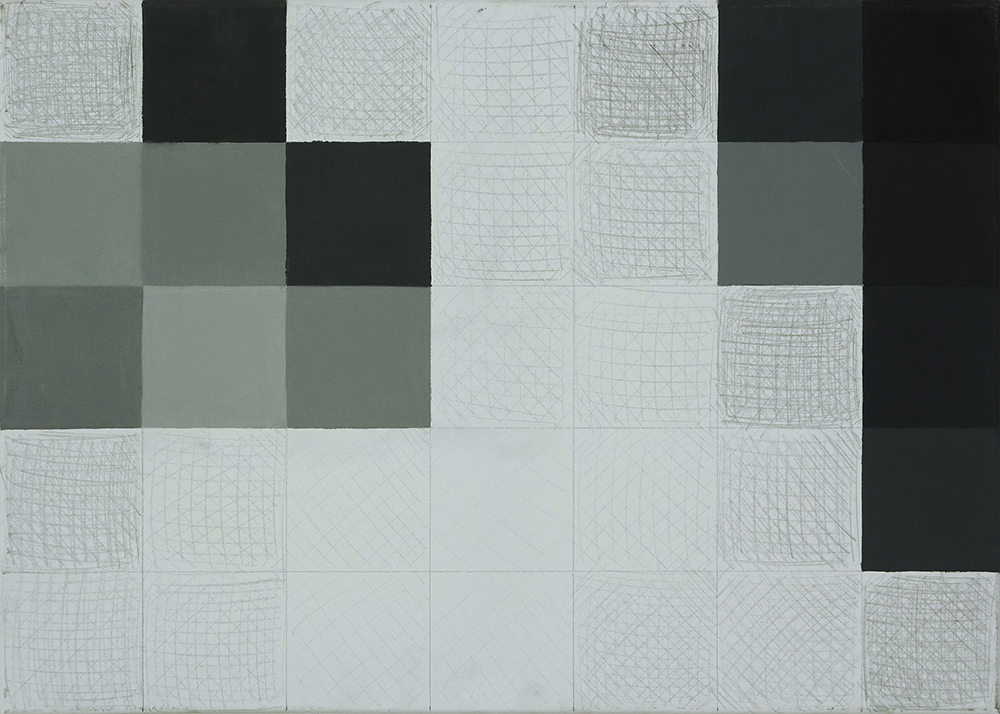
under compulsion # 9, 2006 zwangsweise beendet am 08.12.2006 um 11:51 Öl und Bleistift auf Leinwand 50 x 70 cm
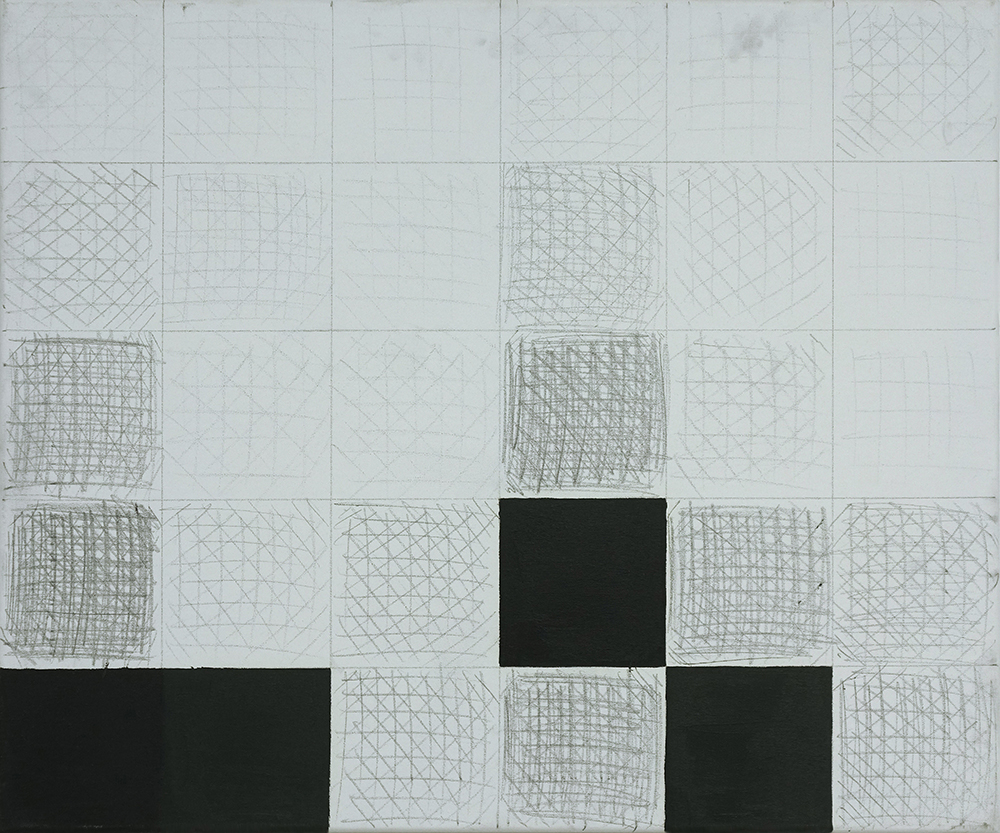
under compulsion # 11, 2006 zwangsweise beendet am 15.12.2006 um 11:58 Öl und Bleistift auf Leinwand 50 x 60 cm
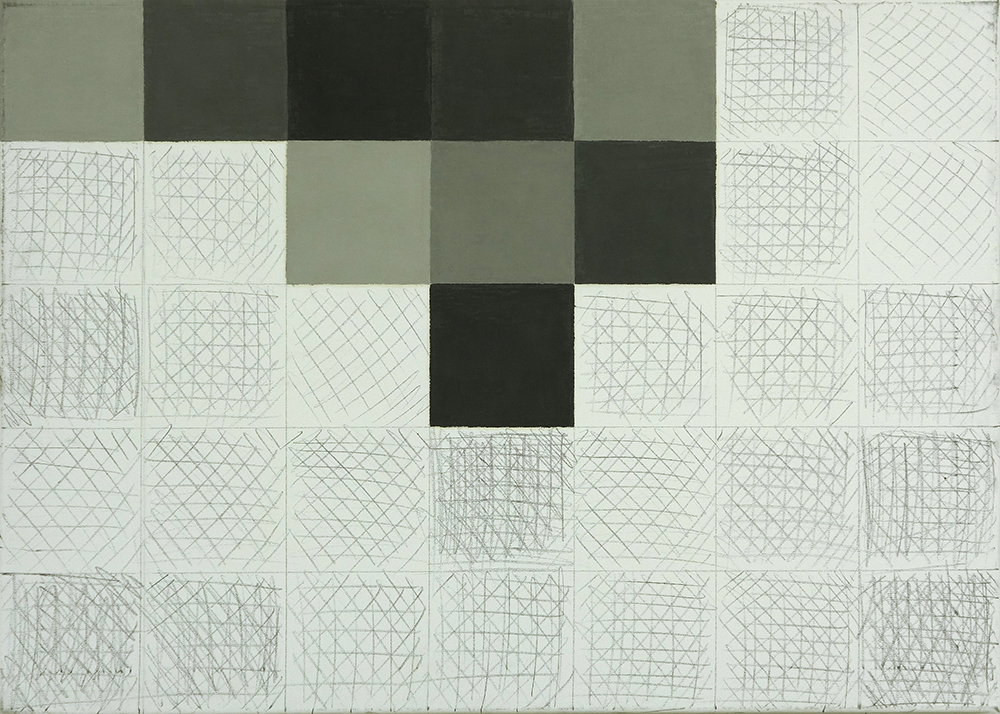
under compulsion # 13, 2007 zwangsweise beendet am 10.01.2007 um 12:50 Öl und Bleistift auf Leinwand 50 x 70 cm
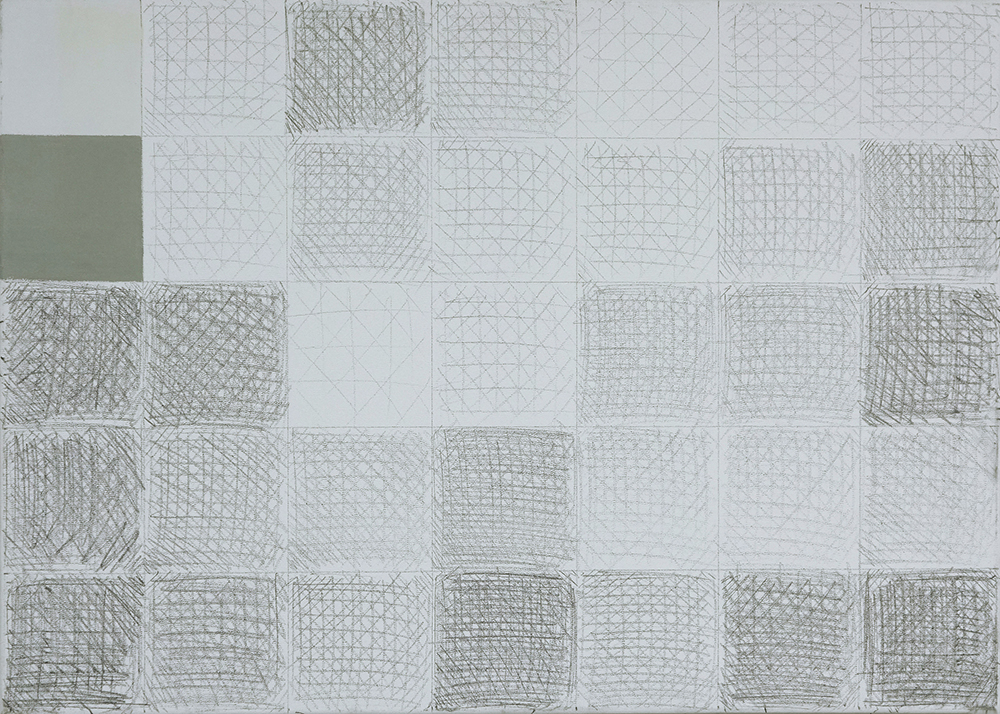
under compulsion # 16, 2007 zwangsweise beendet am 19.01.2007 um 14:21 Öl und Bleistift auf Leinwand 50 x 70 cm
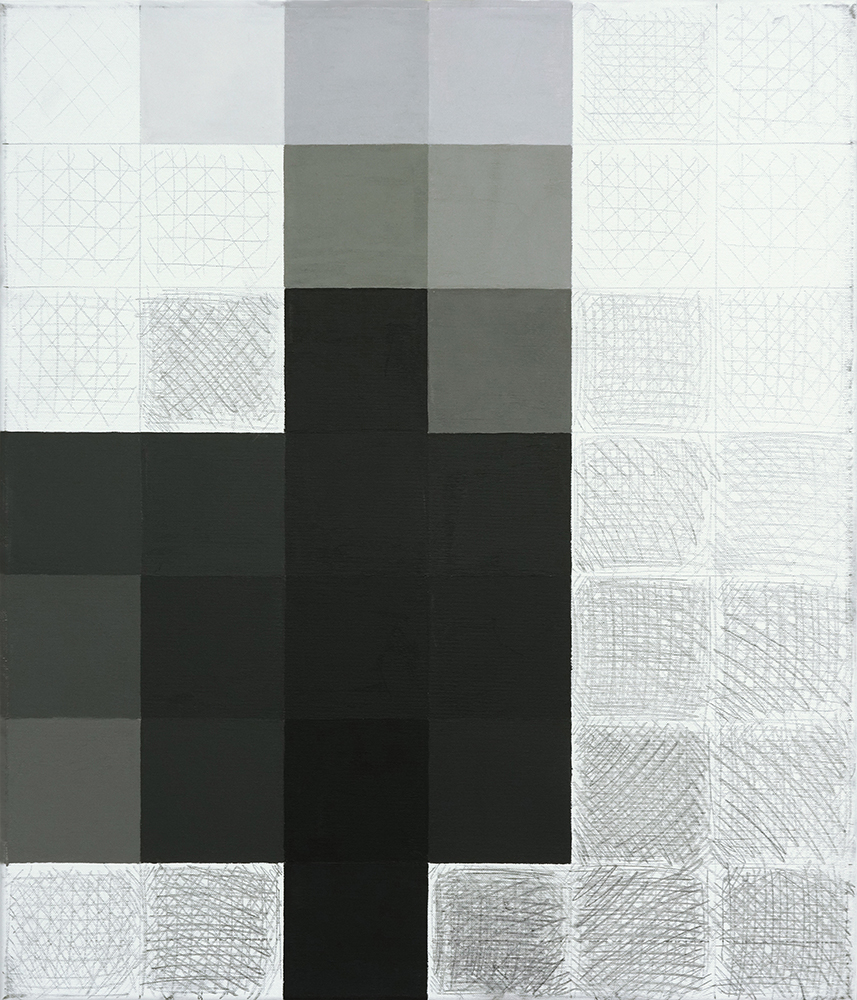
under compulsion # 18, 2007 zwangsweise beendet am 26.01.2007 um 12:16 Öl und Bleistift auf Leinwand 70 x 60 cm
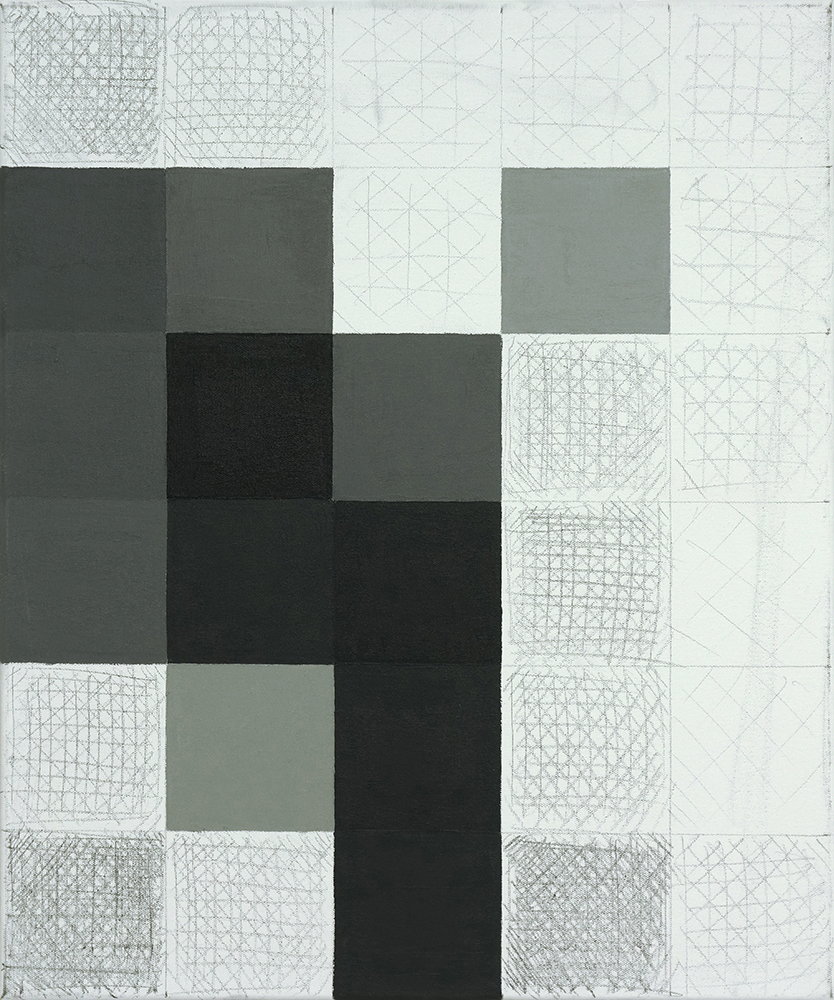
under compulsion # 19, 2007 zwangsweise beendet am 02.02.2007 um 10:15 Öl und Bleistift auf Leinwand 60 x 50 cm
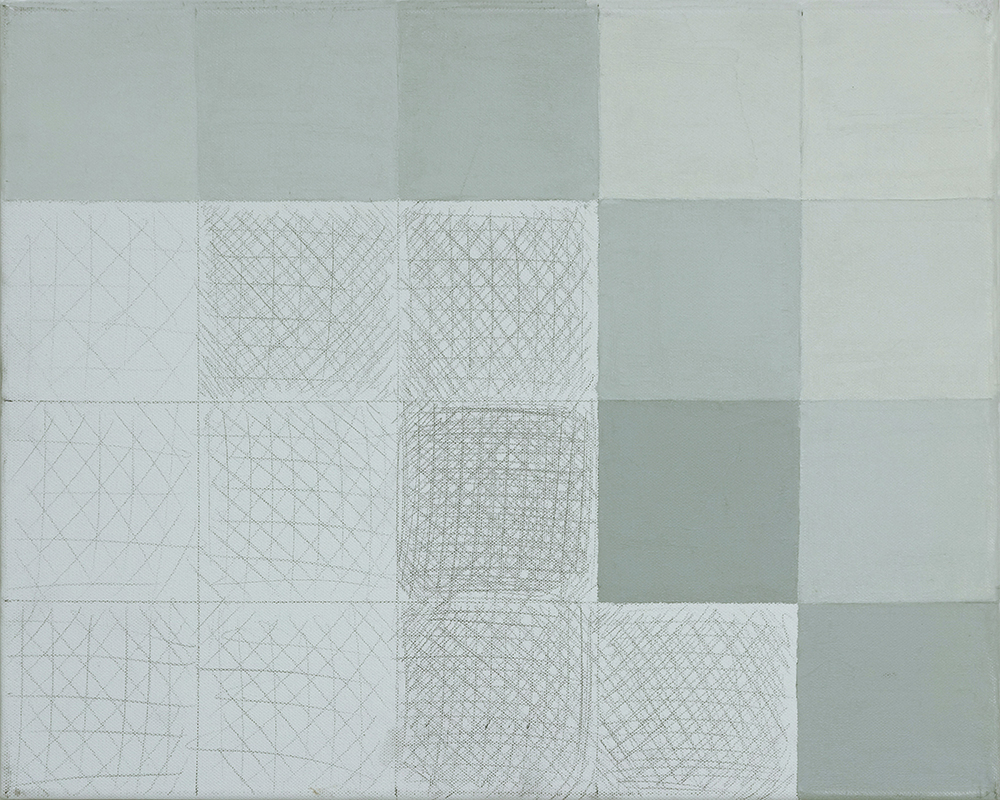
under compulsion # 21, 2007 zwangsweise beendet am 10.02.2007 um 12:25 Öl und Bleistift auf Leinwand 40 x 50 cm
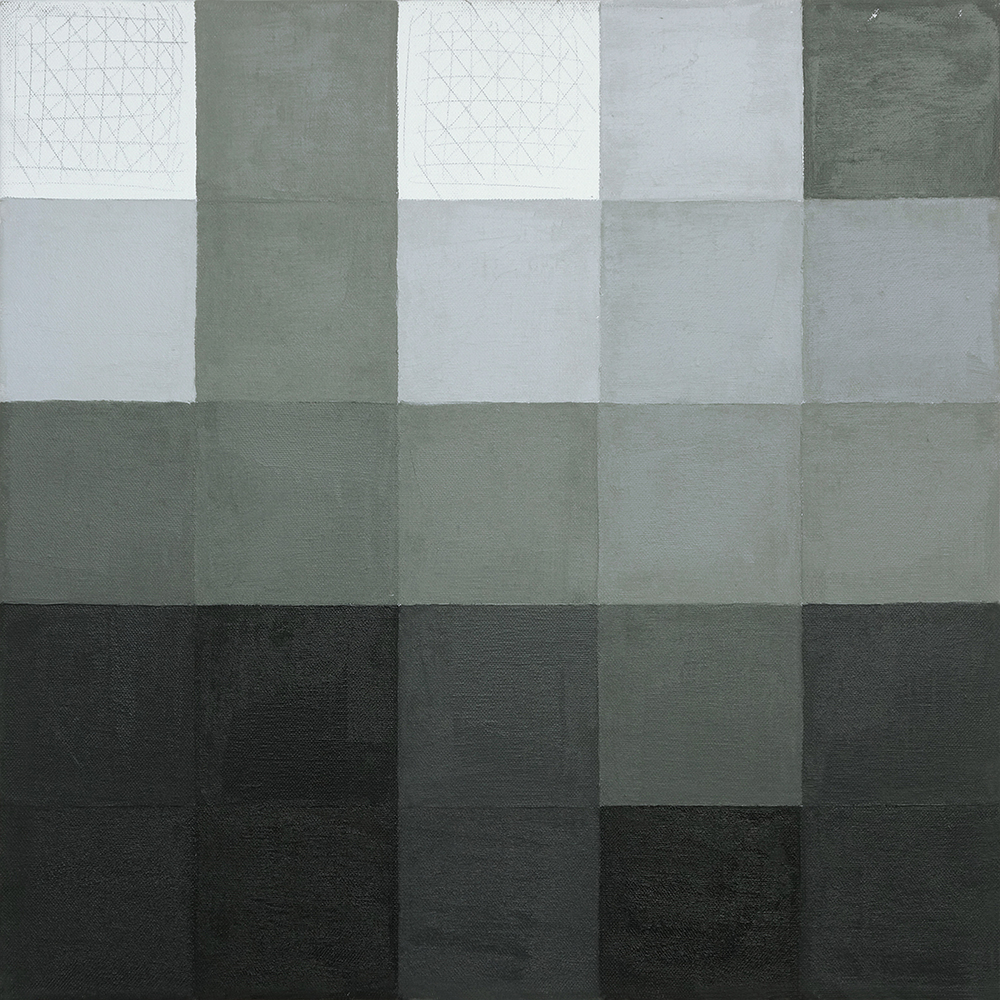
under compulsion # 26, 2007 zwangsweise beendet am 14.04.2007 um 11:23 Öl und Bleistift auf Leinwand 50 x 50 cm